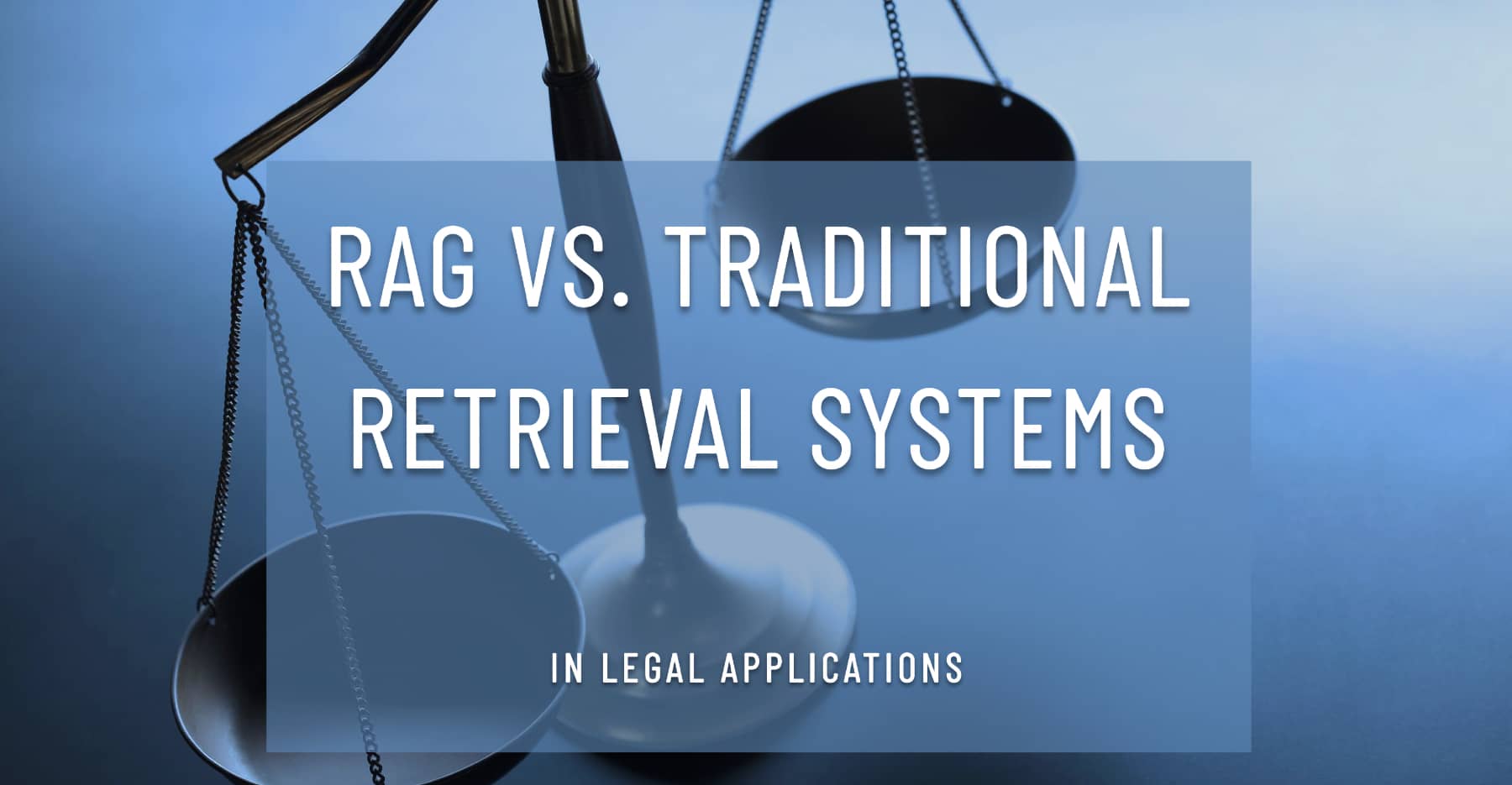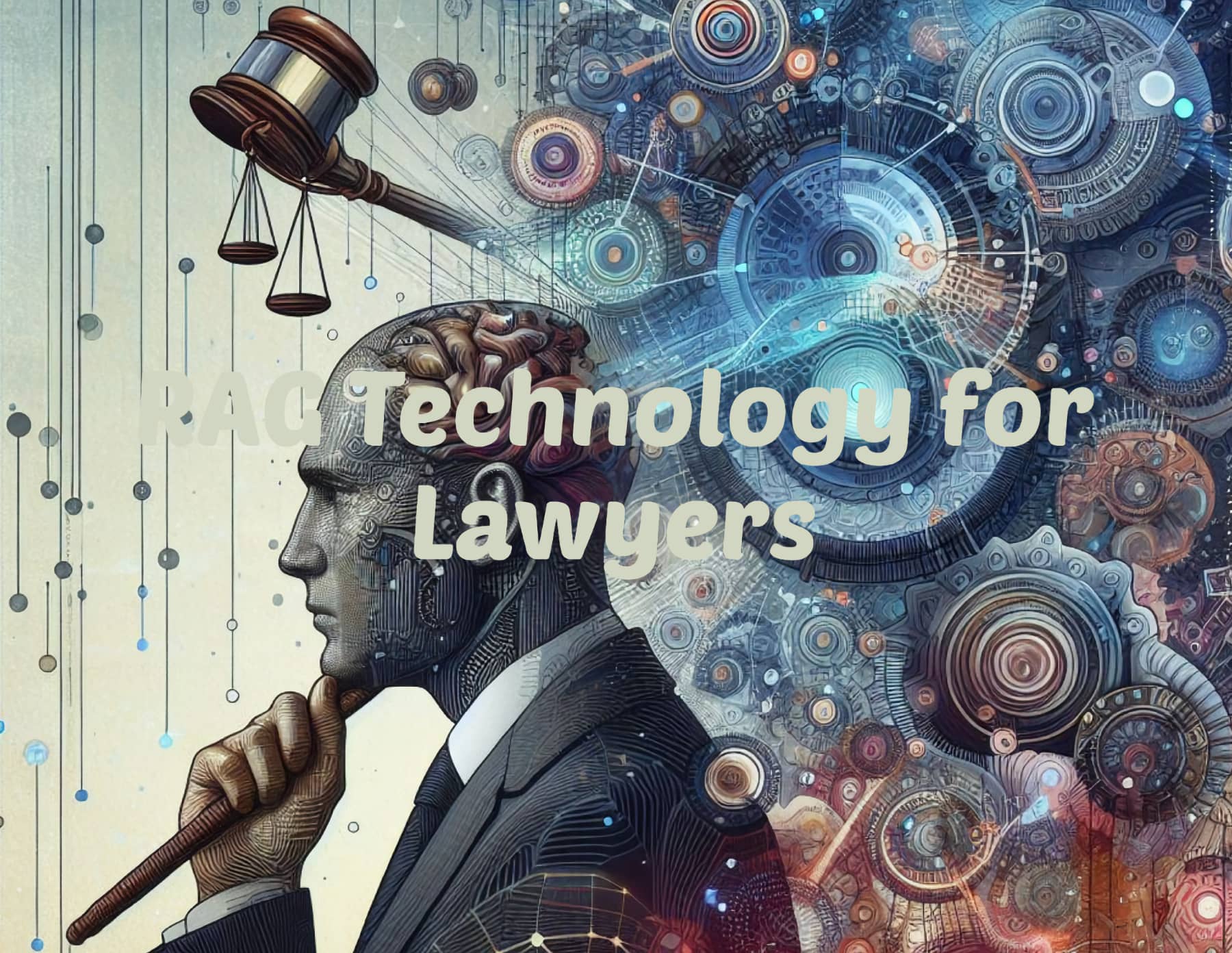Generative AI (GenAI) has emerged as a transformative force in the legal industry. As more and more law firms and legal departments seek to leverage the power of artificial intelligence to streamline their workflows and improve efficiency, they are increasingly turning to Large Language Models (LLMs) and other GenAI technologies. However, the adoption of GenAI in the legal sector is not without its challenges, as legal teams grapple with concerns around data privacy, ethical considerations, and the cost and complexity of implementing these systems. This is where Retrieval Augmented Generation (RAG) comes in, offering a promising solution for lawyers looking to harness the power of GenAI while addressing these key challenges.
Understanding Retrieval Augmented Generation (RAG)
Retrieval Augmented Generation (RAG) is a cutting-edge approach to natural language processing that combines the strengths of both retrieval-based and generative-based models. In a RAG system, an LLM is augmented with a retrieval component that allows it to access and utilize relevant information from external sources, such as legal databases or proprietary data repositories. This enables the model to generate more accurate, contextually relevant, and domain-specific outputs, making it particularly well-suited for legal applications.
The benefits of RAG for the legal industry are numerous. By leveraging proprietary data sources, RAG systems can provide legal teams with instant access to a wealth of knowledge and expertise, enabling them to make more informed decisions and deliver better outcomes for their clients. RAG can also help to streamline and automate many time-consuming and repetitive tasks, such as document review, legal research, and compliance audits, freeing up lawyers to focus on higher-value work.

RAG vs. Traditional Retrieval Systems in Legal Applications
While traditional retrieval systems have been used in legal applications for many years, they often lack the precision and contextual accuracy needed to truly revolutionize legal workflows. This is where RAG comes in, offering a more advanced and sophisticated approach to information retrieval that is tailored specifically to the needs of the legal industry.
One of the key advantages of RAG over traditional retrieval systems is its ability to prioritize precision and contextual accuracy. By utilizing Large Language Models (LLMs) in the retrieval process, RAG systems can better understand the nuances and complexities of legal language, enabling them to surface more relevant and accurate results. This is particularly important in the legal context, where even small differences in wording or interpretation can have significant consequences.
Another important factor to consider is latency. Traditional retrieval systems often prioritize speed over accuracy, sacrificing precision for the sake of faster results. However, in the legal industry, accuracy is paramount, and lawyers are often willing to trade slightly longer wait times for more reliable and contextually relevant information. RAG systems are designed with this in mind, prioritizing precision and contextual accuracy over raw speed.
Overcoming Legal Considerations with RAG
Despite the many benefits of RAG for the legal industry, there are also several important considerations that legal teams must take into account when implementing these systems. Chief among these are concerns around data privacy, ethical considerations, and cost.
Addressing Data Privacy Concerns
One of the biggest challenges facing legal teams looking to adopt RAG is ensuring the security and privacy of sensitive client data. This is where the ability to leverage proprietary data sources comes in. By utilizing internal data repositories and other secure, access-controlled sources, legal teams can ensure that their RAG systems are only processing and generating outputs based on data that they have full control over. This helps to mitigate the risk of data breaches or unauthorized access, while also ensuring compliance with relevant data privacy regulations, such as GDPR or HIPAA.
Tackling Ethical Considerations
Another key consideration for legal teams implementing RAG is ensuring that these systems are being used in an ethical and responsible manner. This includes taking steps to combat potential biases in the data used to train the models, as well as implementing safeguards to protect against hallucinations or other inaccurate outputs.
One way to address these concerns is by prioritizing transparency and explainability in RAG systems. By providing clear visibility into the data sources and algorithms used to generate outputs, as well as the ability to trace and audit individual results, legal teams can help to build trust and confidence in these systems. Additionally, by involving lawyers and other legal experts in the development and deployment of RAG, teams can ensure that these systems are being used in a way that aligns with legal and ethical best practices.
Cost-Effective Implementation of LLMs
Finally, legal teams must also consider the cost and resource requirements associated with implementing RAG systems. While the benefits of these technologies are clear, they can also come with significant upfront costs, both in terms of infrastructure and personnel.
One way to mitigate these costs is by leveraging existing proprietary data sources and other internal resources wherever possible. By utilizing data and expertise that already exists within the organization, legal teams can reduce the need for expensive data acquisition or annotation efforts. Additionally, by streamlining legal content production through the use of RAG and other GenAI technologies, teams can reduce the overall cost and time required to deliver high-quality legal services.

Practical Applications of RAG for Legal Teams
So, what are some of the key use cases and applications of RAG in the legal industry? Here are a few examples of how legal teams are leveraging this technology to improve their workflows and deliver better outcomes for their clients.
Automated Summarization and Review
One of the most promising applications of RAG in the legal industry is in the area of automated summarization and review. By leveraging the power of LLMs and retrieval augmentation, RAG systems can quickly search, retrieve, and summarize relevant legal advice, opinions, and precedents from vast repositories of legal data. This enables lawyers and other legal professionals to leverage past cases and precedents to inform their decision-making and strategy, without having to spend countless hours manually searching through documents.
Use Case | Description |
Legal Research | RAG can help lawyers quickly find relevant cases, statutes, and other legal authorities to support their arguments and advice. |
Due Diligence | RAG can streamline the process of conducting legal due diligence, by automatically identifying and summarizing key risks and issues in contracts, agreements, and other legal documents. |
Knowledge Management | RAG can help law firms and legal departments better organize and leverage their institutional knowledge, by automatically categorizing and summarizing legal content for easy retrieval and reference. |
Discovery Process Optimization
Another key application of RAG in the legal industry is in the area of discovery process optimization. The process of e-discovery, or the identification, collection, and production of electronic evidence in legal proceedings, can be incredibly time-consuming and resource-intensive. By leveraging RAG to automate tasks such as document retrieval, summarization, and analysis, legal teams can significantly reduce the time and costs associated with e-discovery, while also improving the accuracy and completeness of their productions.
Compliance Audits
Finally, RAG can also be a powerful tool for compliance audits and other regulatory matters. By enabling legal teams to quickly and accurately verify their adherence to legal standards and regulations, RAG can help organizations stay compliant and avoid costly penalties or legal challenges. This is particularly important in heavily regulated industries, such as finance, healthcare, and energy, where the consequences of non-compliance can be severe.

Key Considerations for Implementing RAG
As with any complex technology implementation, there are several key factors that legal teams must consider when deploying RAG systems. These include:
Assessing the Need for Live Data from Multiple Sources
One important consideration is whether the RAG system will require live data from multiple sources. In some cases, legal teams may need to integrate data from a variety of different systems and repositories, such as document management systems, e-discovery platforms, and internal databases. This can add significant complexity to the implementation process, and may require additional investment in data integration and management tools.
Deciding Between Building or Buying the Necessary Infrastructure
Another key decision point is whether to build or buy the necessary infrastructure for RAG. While some organizations may choose to develop their own in-house RAG systems, others may opt to partner with external vendors or service providers who can provide pre-built solutions and expertise. Factors to consider here include the organization's internal technical capabilities, budget, and timeline for implementation.
The Importance of Investing in Proprietary Data Management
Regardless of the specific approach taken, one thing is clear: investing in proprietary data management is essential for the success of any RAG implementation in the legal industry. By taking the time to properly organize, clean, and label internal data sources, legal teams can ensure that their RAG systems have access to the high-quality, domain-specific data needed to generate accurate and relevant results. This upfront investment can pay significant dividends in terms of efficiency, accuracy, and cost savings down the line.
Building a Data Foundation for GenAI Success
Of course, the benefits of RAG and other GenAI technologies extend beyond just the immediate use cases and applications. By building a strong data foundation, legal teams can set themselves up for long-term success in the era of artificial intelligence and machine learning.
This means investing in the tools, processes, and expertise needed to effectively centralize and organize data assets, so that they can be easily accessed and utilized by AI systems. It also means developing a culture of data-driven decision-making within the organization, so that lawyers and other legal professionals are empowered to leverage data insights to inform their strategies and advice.
Ultimately, by laying the groundwork for future AI initiatives, legal teams can position themselves to take full advantage of the transformative potential of these technologies in the years to come.
Embracing the RAG Revolution - A New Era of Legal Innovation
The rise of Retrieval Augmented Generation (RAG) represents a major opportunity for the legal industry to harness the power of Generative AI (GenAI) and transform the way legal services are delivered. By combining the strengths of retrieval-based and generative-based models, RAG offers a more advanced, precise, and contextually relevant approach to legal information retrieval and analysis.
However, to fully realize the benefits of RAG, legal teams must be prepared to address key challenges around data privacy, ethical considerations, and cost. This requires a strategic and proactive approach to data management, as well as a willingness to invest in the necessary infrastructure and expertise.
Ultimately, by embracing RAG as a strategic tool and building a strong data foundation, legal teams can position themselves for success in the era of GenAI, and deliver more efficient, effective, and valuable services to their clients.


